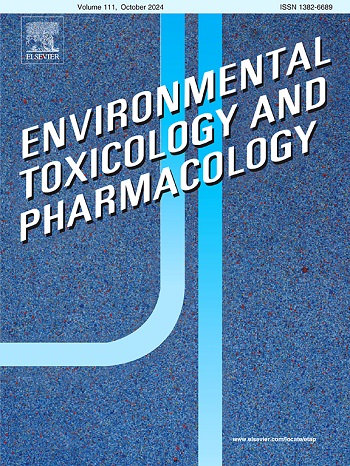西班牙西部蜂蜡中的农药残留:对蜜蜂健康和养蜂生产力的毒理学风险
IF 4.2
3区 环境科学与生态学
Q2 ENVIRONMENTAL SCIENCES
引用次数: 0
摘要
蜂蜡中的农药残留对蜜蜂健康和蜂房生产力构成威胁。这项研究分析了来自埃斯特雷马杜拉五个地区的蜂房的25个蜂蜡样本,埃斯特雷马杜拉是西班牙的一个重要养蜂区。粉底蜡样本也从三个共同供应商处采购,以评估源头的污染情况。采用QuEChERS萃取、LC-MS和GC-MS方法对560种物质进行多残留分析。结果发现杀虫剂18种,杀菌剂7种,除草剂4种,包括禁用物质endrin(高达218.57 µg/kg)和杀虫磷(15 ~ 16 µg/kg)。丙烯酸甲酯(5.27-122 µg/kg)和甲氟戊酸(6.5-138.79 µg/kg)是最常见的残留。粉底蜡积累了16种农药残留,突出了其作为污染源的潜力。违禁农药也被发现。这些发现强调了监测商业地基蜡中农药残留以及评估蜡中农药暴露对养蜂和人类安全的影响的重要性。本文章由计算机程序翻译,如有差异,请以英文原文为准。
Pesticide residues in beeswax from Western Spain: Toxicological risk for bee health and beekeeping productivity
The pesticide residues in beeswax pose a risk to bee health and hive productivity. This study analyzed 25 beeswax samples from apiaries across five regions in Extremadura, a key beekeeping area in Spain. Foundation wax samples were also sourced from three common suppliers to evaluate contamination at the origin. A multi-residue of 560 substances was performed using QuEChERS extraction, LC-MS, and GC-MS methods. The results revealed 18 insecticides, 7 fungicides, and 4 herbicides, including banned substances such as endrin (up to 218.57 µg/kg) and chlorfenvinphos (15–16 µg/kg). Acrinathrin (5.27–122 µg/kg) and tau-fluvalinate (6.5–138.79 µg/kg) were the most frequent residues. Foundation wax accumulated 16 pesticide residues, highlighting its potential as a source of contamination. Banned pesticides have also been detected. These findings highlight the importance of monitoring pesticide residues in commercial foundation waxes and assessing the impact of pesticide exposure from wax on beekeeping and human safety.
求助全文
通过发布文献求助,成功后即可免费获取论文全文。
去求助
来源期刊
CiteScore
7.00
自引率
4.70%
发文量
185
审稿时长
34 days
期刊介绍:
Environmental Toxicology and Pharmacology publishes the results of studies concerning toxic and pharmacological effects of (human and veterinary) drugs and of environmental contaminants in animals and man.
Areas of special interest are: molecular mechanisms of toxicity, biotransformation and toxicokinetics (including toxicokinetic modelling), molecular, biochemical and physiological mechanisms explaining differences in sensitivity between species and individuals, the characterisation of pathophysiological models and mechanisms involved in the development of effects and the identification of biological markers that can be used to study exposure and effects in man and animals.
In addition to full length papers, short communications, full-length reviews and mini-reviews, Environmental Toxicology and Pharmacology will publish in depth assessments of special problem areas. The latter publications may exceed the length of a full length paper three to fourfold. A basic requirement is that the assessments are made under the auspices of international groups of leading experts in the fields concerned. The information examined may either consist of data that were already published, or of new data that were obtained within the framework of collaborative research programmes. Provision is also made for the acceptance of minireviews on (classes of) compounds, toxicities or mechanisms, debating recent advances in rapidly developing fields that fall within the scope of the journal.

 求助内容:
求助内容: 应助结果提醒方式:
应助结果提醒方式:


